
How to Use MQ 135: Examples, Pinouts, and Specs
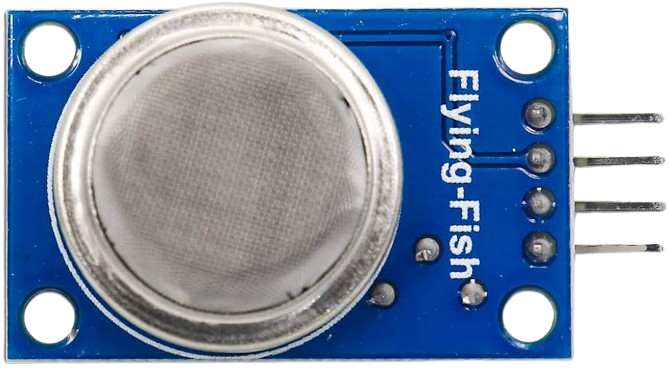
 Design with MQ 135 in Cirkit Designer
Design with MQ 135 in Cirkit DesignerIntroduction
The MQ 135 is a versatile gas sensor designed to detect a wide range of gases, including ammonia (NH₃), benzene (C₆H₆), alcohol, smoke, and other harmful gases. It operates on the principle of resistive change, where the sensor's resistance varies in the presence of target gases. This change is converted into an analog output signal, making it suitable for air quality monitoring and environmental sensing applications.
Explore Projects Built with MQ 135
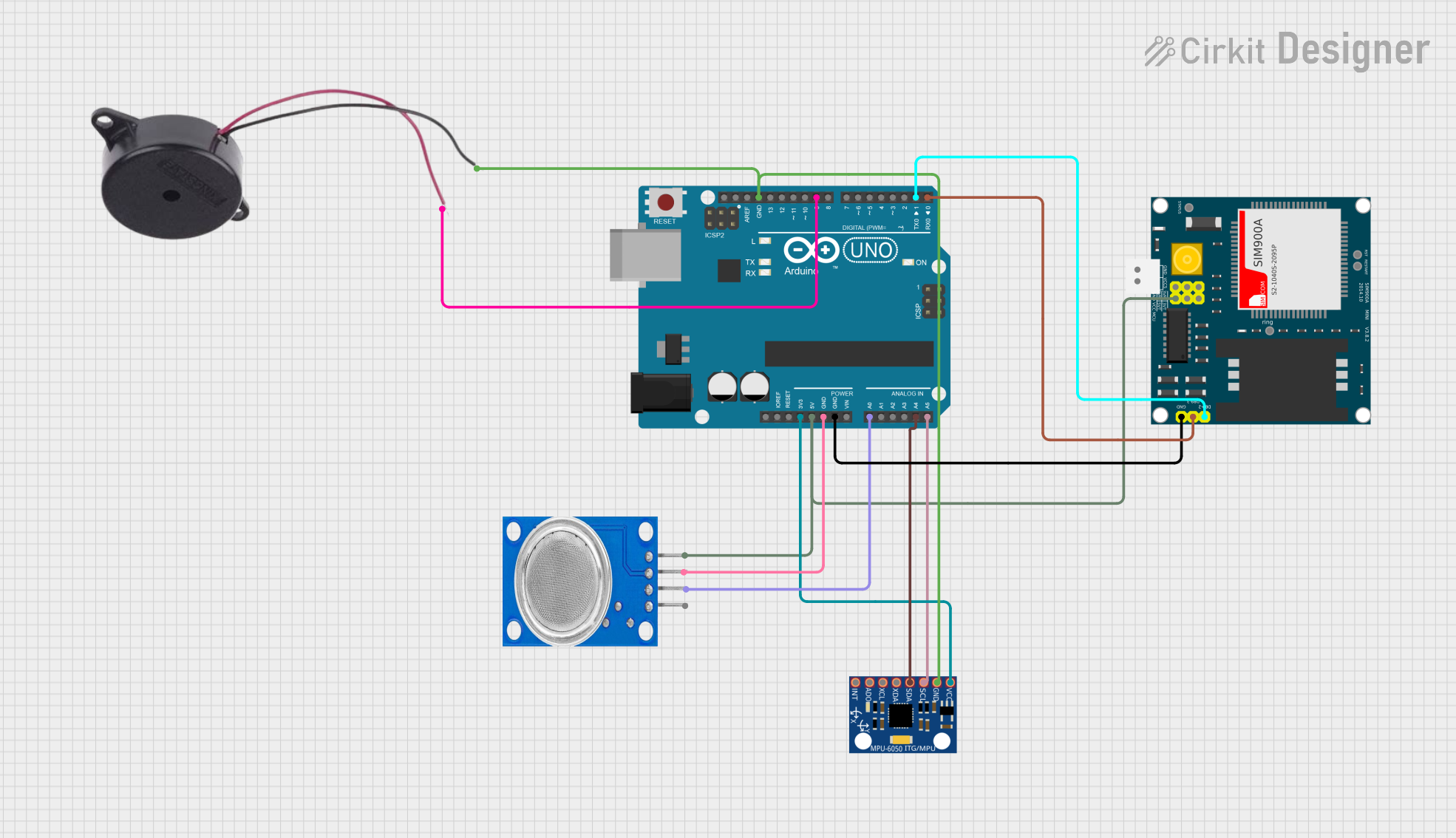
 Open Project in Cirkit Designer
Open Project in Cirkit Designer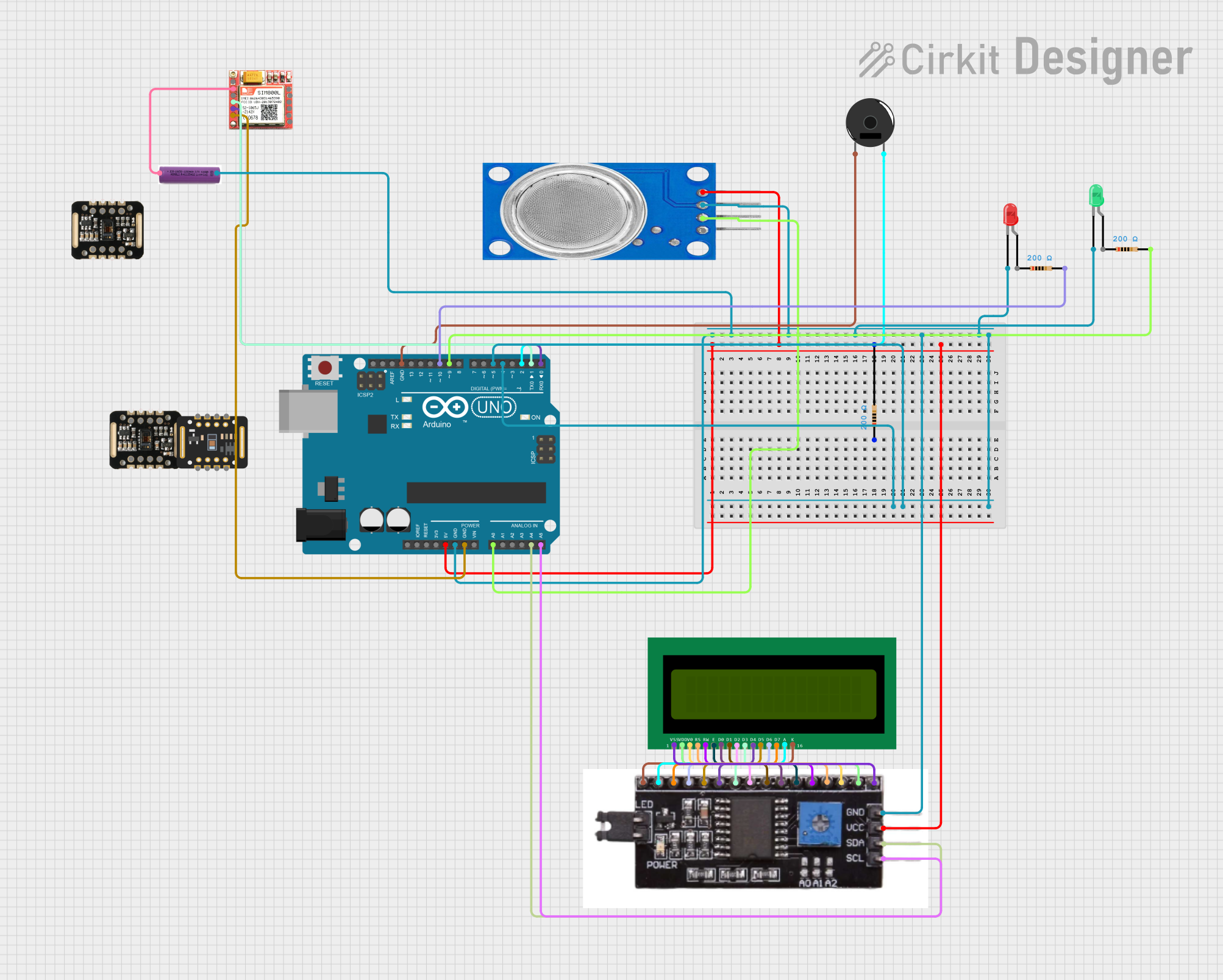
 Open Project in Cirkit Designer
Open Project in Cirkit Designer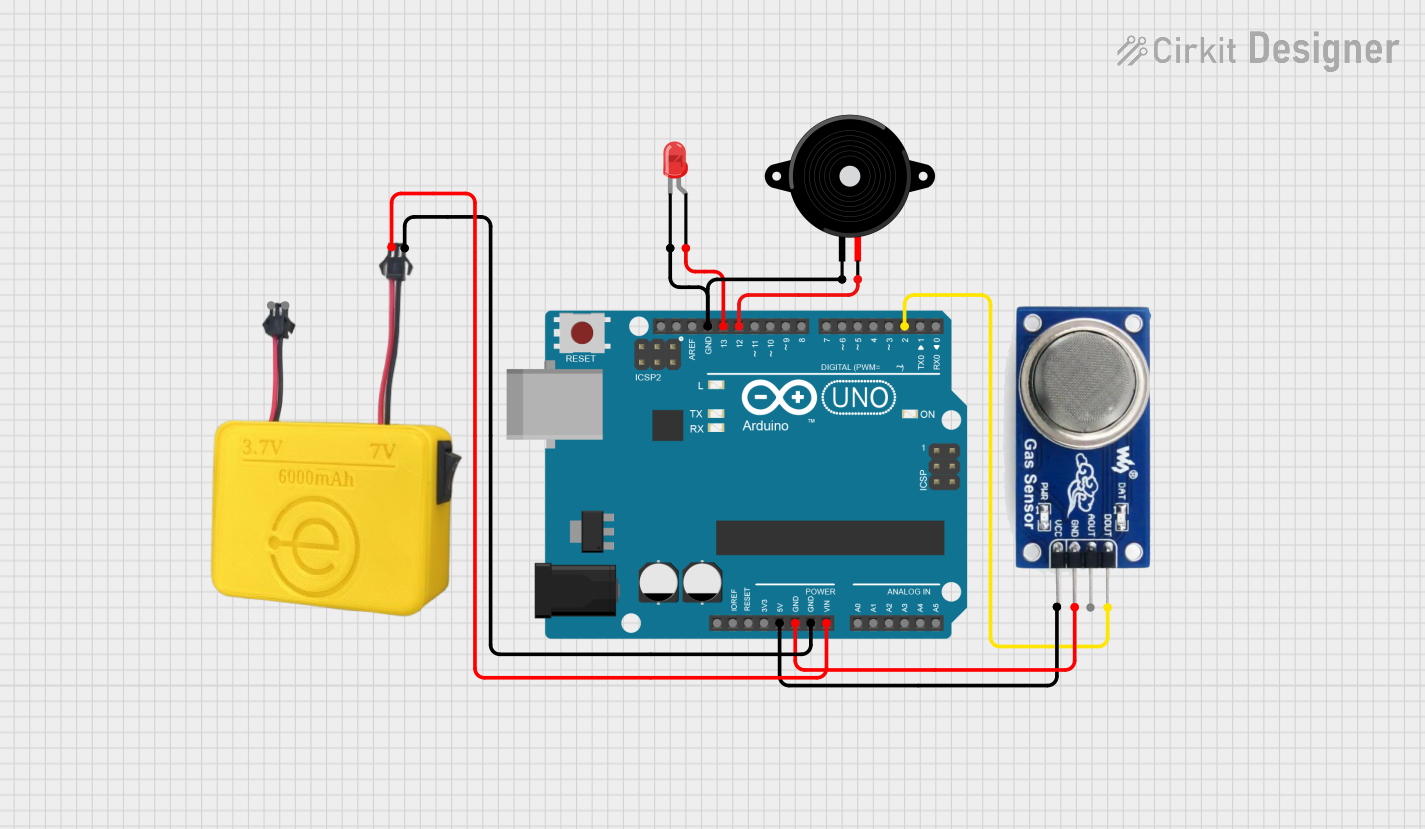
 Open Project in Cirkit Designer
Open Project in Cirkit Designer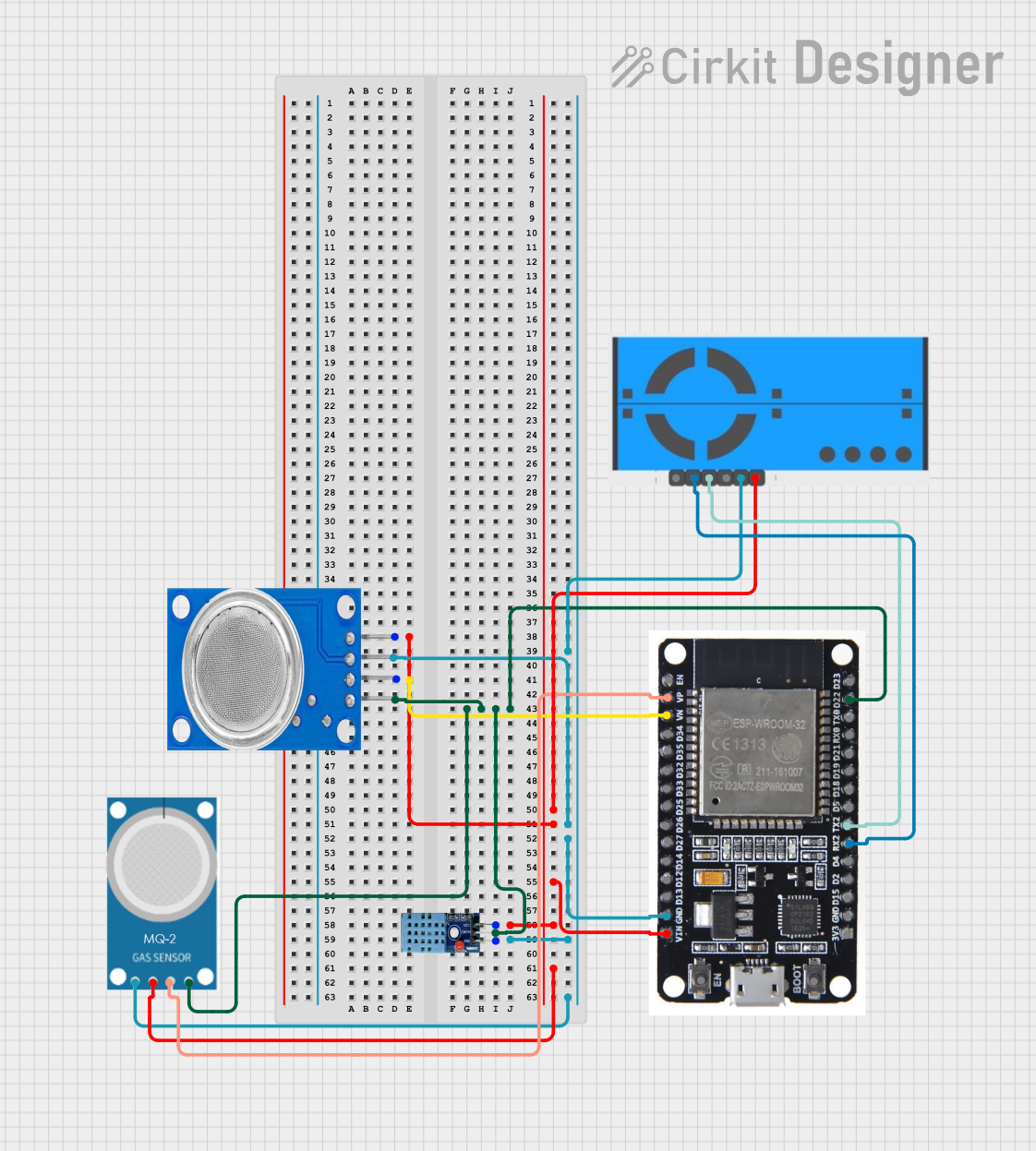
 Open Project in Cirkit Designer
Open Project in Cirkit DesignerExplore Projects Built with MQ 135

 Open Project in Cirkit Designer
Open Project in Cirkit Designer
 Open Project in Cirkit Designer
Open Project in Cirkit Designer
 Open Project in Cirkit Designer
Open Project in Cirkit Designer
 Open Project in Cirkit Designer
Open Project in Cirkit DesignerCommon Applications
- Air quality monitoring systems
- Industrial gas detection
- Smoke and fire detection systems
- Environmental pollution monitoring
- Smart home automation for air quality control
Technical Specifications
The MQ 135 sensor is designed for ease of use and integration into various systems. Below are its key technical details:
| Parameter | Value |
|---|---|
| Operating Voltage | 5V DC |
| Load Resistance (RL) | 10 kΩ (typical) |
| Heating Voltage (VH) | 5V ± 0.2V |
| Heating Current (IH) | ≤ 120 mA |
| Detection Range | 10 ppm to 1000 ppm (varies by gas) |
| Preheat Time | ≥ 24 hours for stable operation |
| Output Signal | Analog voltage (0-5V) |
| Operating Temperature | -20°C to 50°C |
| Humidity Range | ≤ 95% RH |
| Sensor Life | ≥ 2 years |
Pin Configuration and Descriptions
The MQ 135 sensor typically comes with four pins. Below is the pinout description:
| Pin | Name | Description |
|---|---|---|
| 1 | VCC | Power supply pin. Connect to 5V DC. |
| 2 | GND | Ground pin. Connect to the ground of the circuit. |
| 3 | AOUT | Analog output pin. Provides a voltage proportional to the gas concentration. |
| 4 | DOUT | Digital output pin. Outputs HIGH or LOW based on a preset threshold (optional). |
Usage Instructions
How to Use the MQ 135 in a Circuit
- Power the Sensor: Connect the VCC pin to a 5V DC power source and the GND pin to the ground.
- Read the Output:
- Use the AOUT pin to read the analog signal. This pin provides a voltage proportional to the gas concentration.
- Optionally, use the DOUT pin for a digital HIGH/LOW signal if a threshold is set using the onboard potentiometer.
- Preheat the Sensor: Allow the sensor to preheat for at least 24 hours before taking accurate readings. This ensures stable operation.
- Connect to a Microcontroller: The analog output can be connected to an ADC (Analog-to-Digital Converter) pin of a microcontroller like the Arduino UNO for further processing.
Important Considerations and Best Practices
- Preheating: The sensor requires a preheating period of at least 24 hours for optimal performance.
- Calibration: Calibrate the sensor in a clean air environment to establish a baseline reading.
- Power Supply: Ensure a stable 5V power supply to avoid fluctuations in readings.
- Ventilation: Place the sensor in a well-ventilated area for accurate gas detection.
- Avoid Contamination: Keep the sensor away from water, dust, and oil to prevent damage.
Example Code for Arduino UNO
Below is an example of how to interface the MQ 135 with an Arduino UNO to read analog values:
// MQ 135 Gas Sensor Example Code for Arduino UNO
// This code reads the analog output of the MQ 135 sensor and prints the value
// to the Serial Monitor. Ensure the sensor is connected to the correct pins.
const int MQ135_PIN = A0; // Connect the AOUT pin of MQ 135 to Arduino A0
void setup() {
Serial.begin(9600); // Initialize serial communication at 9600 baud
pinMode(MQ135_PIN, INPUT); // Set the MQ 135 pin as input
}
void loop() {
int sensorValue = analogRead(MQ135_PIN); // Read the analog value from the sensor
float voltage = sensorValue * (5.0 / 1023.0); // Convert the value to voltage
// Print the sensor value and voltage to the Serial Monitor
Serial.print("Sensor Value: ");
Serial.print(sensorValue);
Serial.print(" | Voltage: ");
Serial.print(voltage);
Serial.println(" V");
delay(1000); // Wait for 1 second before the next reading
}
Troubleshooting and FAQs
Common Issues and Solutions
No Output or Incorrect Readings:
- Cause: Insufficient preheating time.
- Solution: Ensure the sensor is preheated for at least 24 hours before use.
Fluctuating Readings:
- Cause: Unstable power supply or environmental interference.
- Solution: Use a regulated 5V power supply and place the sensor in a stable environment.
Sensor Not Responding to Gases:
- Cause: Sensor contamination or damage.
- Solution: Replace the sensor if it has been exposed to water, oil, or excessive dust.
Digital Output Not Triggering:
- Cause: Incorrect threshold setting on the potentiometer.
- Solution: Adjust the potentiometer to set the desired threshold level.
FAQs
Q1: Can the MQ 135 detect multiple gases simultaneously?
A1: Yes, the MQ 135 can detect a variety of gases, but it does not differentiate between them. It provides a combined analog output based on the total concentration of detectable gases.
Q2: How do I calibrate the MQ 135 sensor?
A2: Place the sensor in clean air and record the baseline analog output. Use this value as a reference for detecting gas concentrations.
Q3: What is the lifespan of the MQ 135 sensor?
A3: The sensor typically lasts for 2 years under normal operating conditions.
Q4: Can I use the MQ 135 with a 3.3V microcontroller?
A4: The MQ 135 is designed for 5V operation. If using a 3.3V microcontroller, a level shifter or voltage divider is required for compatibility.